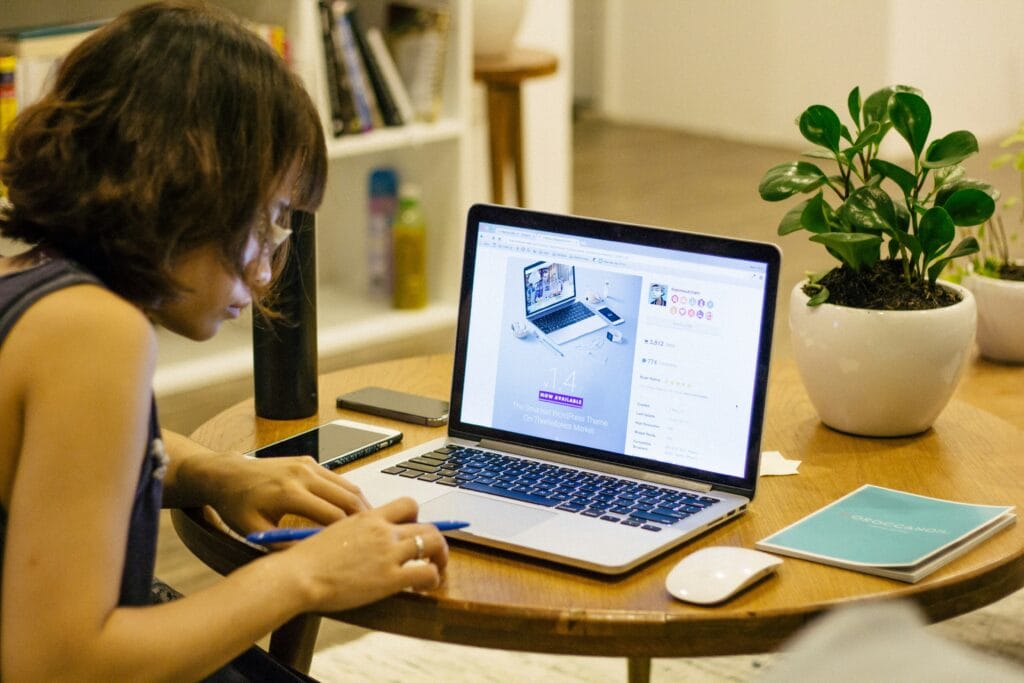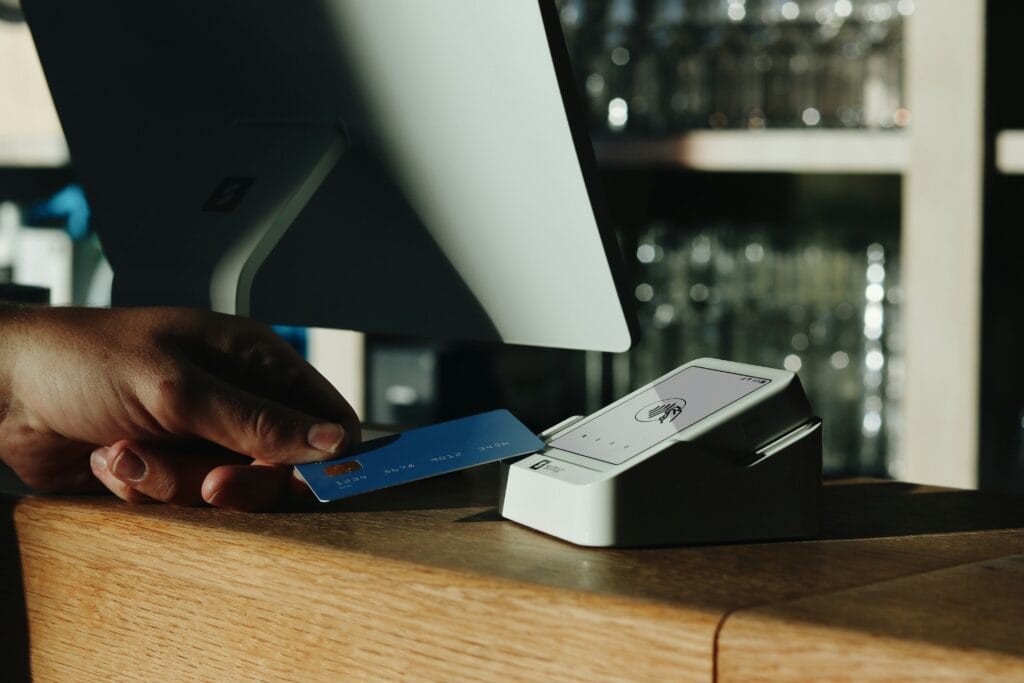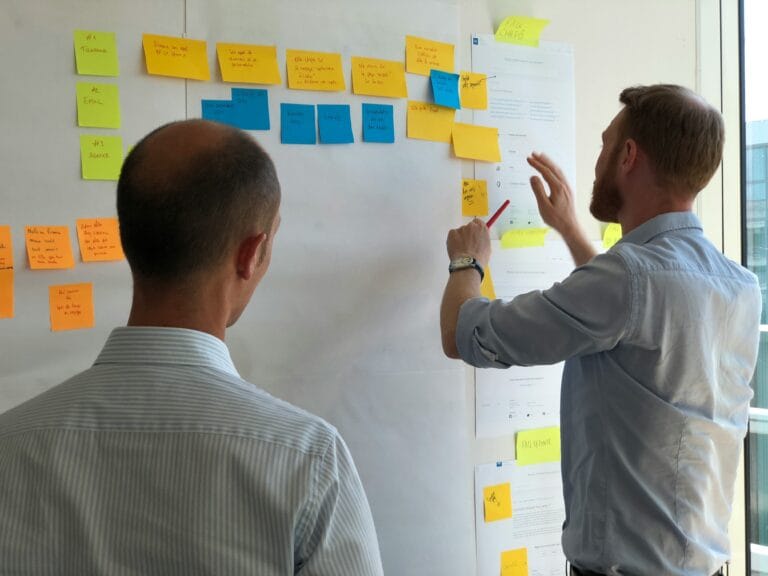Buy Now Pay Later eCommerce: Your 10-Day Plan Before Black Friday
Look, I’m going to be honest with you. If you haven’t added buy now pay later to your checkout yet, you’re leaving serious money on the table this holiday season. And I mean serious money.
Adobe just dropped some numbers that should make every eCommerce owner sit up: shoppers are expected to drop $20.2 billion using BNPL options this holiday season. That’s $2 billion more than last year. This isn’t some fringe payment method anymore. It’s mainstream, and your customers are actively looking for it.
Here’s the thing though. We’re staring down Black Friday 2025 in less than two weeks. You might be thinking “great, another thing I should have done three months ago.” But here’s what most people don’t realize: implementing a BNPL holiday strategy is actually one of the fastest, highest-impact moves you can make right now. We’re talking 30% increases in average order value Q4 with relatively minimal lift on your end.
I’ve watched merchants scramble to optimize product pages, tweak ad copy, and A/B test button colors in these final weeks before peak season. Meanwhile, adding the right payment options can boost your conversion rate faster than any of that. The data backs this up, and the best part? You can actually get this done before the holiday rush hits.
So let’s talk about how to make this happen, which provider makes sense for your business, and what you need to do in the next 10 days to capture your share of that $20 billion pie.
The $20.2 Billion Opportunity You’re Missing This Holiday Season
Look, I’m going to be straight with you. If your checkout doesn’t offer buy now pay later ecommerce options right now, you’re about to watch a massive chunk of holiday revenue walk right past your store. Adobe just dropped their forecast, and they’re calling it: $20.2 billion in BNPL spending this holiday season alone. That’s a $2 billion jump from last year.

Here’s the problem. Most merchants still treat BNPL like some nice-to-have feature they’ll get around to eventually. Meanwhile, consumer expectations have completely shifted. Research shows that 21% of shoppers are more likely to shop with retailers offering BNPL, and another 20% say they’re more likely to actually complete their purchase when they see those payment options at checkout.
The Numbers Don’t Lie
When you implement a proper BNPL holiday strategy, you’re looking at potential average order value increases of 30% or more. That’s not some theoretical number. During the 2024 holiday season, Afterpay merchants saw a 33% lift in spending compared to the previous year. Real stores, real results.
And if you think this is just about younger shoppers, think again. Sure, Gen Z and Millennials are leading the charge (60%+ prefer BNPL options), but 25% of all U.S. consumers plan to use BNPL for holiday shopping this year. That’s one in four potential customers who are actively looking for these payment options.
Black Friday Is Three Weeks Away
Let’s talk timing. Black Friday 2025 is November 28th. If you’re reading this and thinking “I’ll add BNPL next quarter,” you’re missing the entire point. Your competitors who already have buy now pay later ecommerce integrated? They’re about to capture a disproportionate share of holiday spending. Not because their products are better, but because they made it easier for people to say yes to bigger purchases.
Think about it from your customer’s perspective. They’re shopping for gifts, trying to spread out costs, and looking at carts that easily hit $200, $300, or more. When they see they can split that into four interest-free payments, their whole calculation changes. That $400 gift set suddenly feels manageable. That impulse to add one more item to the cart? It happens more often when the payment options conversion rate improves with flexible payment terms.
88% of retail business decision-makers say BNPL is an important tool for attracting new customers and increasing sales during the holidays.
The thing about holiday shopping is that it’s inherently different from regular purchases. People are buying gifts, often multiple items at once. They’re thinking about budgets stretched across December and into January. They want to make their loved ones happy without wrecking their finances. That’s exactly where buy now pay later ecommerce shines.
So why does BNPL work so well specifically during the holiday rush? It comes down to psychology and timing. When someone’s making a $500 purchase for themselves in March, they might hesitate. But when they’re buying gifts in November and can split that same amount into manageable chunks? The friction drops dramatically. Let’s break down exactly why this payment method has become essential for Q4 success.
Why BNPL Drives 30% Higher AOV: The Psychology Behind Holiday Spending
The Mental Accounting Magic: Why $50 × 4 Feels Better Than $200
Here’s something wild that happens in your customers’ brains during holiday shopping. Show them a $200 price tag, and they’re doing instant budget math: “Okay, that’s the kids’ gifts covered, but what about my sister? And my parents?” The cart stays empty.
But split that same $200 into four payments of $50? Suddenly it’s manageable. That’s mental accounting at work, and it’s not some marketing trick. It’s how our brains actually process money when we’re juggling multiple purchases.
During Q4, when shoppers are buying gifts for 8-10 people on average, this psychological shift becomes your secret weapon. Research shows BNPL can increase average order values by 20-40%, and I’ve seen it play out exactly like that with real stores.
Take HappyFlops, for instance. After implementing buy now pay later ecommerce options, their average cart jumped from $150 to $195. That’s not because customers suddenly had more money. They just felt more confident spreading payments across their next few paychecks instead of taking one big hit right before the holidays.

Permission to Upgrade: When Good Enough Becomes Premium
You know what else happens when payment friction drops? Customers stop settling. That $89 sweater they were eyeing? With BNPL, they’re suddenly considering the $129 cashmere version. Those basic earbuds? Now they’re looking at the noise-canceling ones.
This isn’t impulse buying (well, not entirely). It’s permission. When you remove the sticker shock of paying everything upfront, people naturally trade up to what they actually want. Retailers report average order value increases of up to 87% in some categories when BNPL is available.
I’ve watched this play out in behavioral analytics data. Customers add 2-3 additional gift items to their cart when installment options appear at checkout. They’re not being reckless. They’re just able to buy the gifts they wanted to give in the first place.
Cart Completion Confidence: The $347 Threshold Problem
Here’s where things get really interesting. Most holiday carts die somewhere between $300-$400. Not because people don’t want the items, but because that total just feels… overwhelming. Especially when they’re staring at it on November 20th knowing they still have half their list to buy.
BNPL solves this specific psychological barrier. When that $347 cart becomes four payments of $87, abandonment drops significantly. Studies show conversion rate improvements typically range from 20-30% when payment options are introduced, and that lift is most dramatic during high-volume shopping periods.
The math works for merchants too. Yeah, BNPL fees run 2-6% typically (sometimes higher depending on your provider and terms). But when you’re seeing a 30% conversion lift and customers adding $45 more per order on average, the net revenue increase crushes the cost. You’re not just offsetting fees. You’re actually growing profit.
Even accounting for BNPL fees of 2-6%, the typical 20-30% conversion lift and increased average order value means net revenue growth significantly outpaces the cost of offering these payment options.
The Real Numbers Behind the Psychology
Let’s get specific. Say your average holiday order is $150 and you convert at 2.5%. Add BNPL and that conversion jumps to 3.25% (a conservative 30% lift). Your average order value climbs to $180 because people are adding those extra gifts.
On 10,000 visitors, that’s the difference between $37,500 in revenue and $58,500. Even if you’re paying 4% in BNPL fees ($2,340), you’re still up $18,660. That’s not theoretical. That’s what happens when you align your payment options with how people actually think about money during the holidays.
Now, getting this implemented before Black Friday takes some planning. You can’t just flip a switch on November 25th and expect everything to work smoothly. Provider integration, checkout flow testing, customer service training… there’s a timeline to consider.
Okay, real talk. Ten days sounds insane, right? But here’s what I’ve learned from watching stores scramble before Black Friday: it’s actually doable if you know what you’re doing. And honestly? Even getting one BNPL provider live is better than waiting until January when everyone’s broke and your Q4 opportunity is toast.
Let me walk you through this like I’m sitting across from you with coffee, breaking down exactly what needs to happen each day.
Days 1-2: Pick Your Provider (Don’t Overthink This)
You need to match your BNPL provider to your actual business. Selling $50 items? Klarna or PayPal Pay Later makes sense. Moving $500+ products? Look at Affirm or providers offering longer payment terms. The key thing most people miss: your average order value should fit comfortably within the provider’s credit limits.
Quick reality check on fees. Most BNPL providers charge between 2-8% per transaction, which sounds steep until you remember that boosting your conversion rate by even 3% usually covers it. Plus, you get paid upfront while they handle the installment headache.
Pro tip: if you’re selling across multiple regions, consider offering different providers for different markets. Klarna crushes it in Europe, while Afterpay owns Australia. Match the provider to where your customers actually are.

Days 3-4: Application Time (Faster Than You Think)
Here’s where people get nervous for no reason. The application process isn’t some month-long ordeal. You’ll need your business info, terms and conditions, pricing structure, and customer service details. Most providers approve within 24-48 hours if your paperwork’s clean.
The stuff that slows people down? Missing documentation or unclear refund policies. Have your business registration, tax ID, and bank account details ready to go. If you’re incorporated, have that paperwork handy. The cleaner your submission, the faster you’re live.
One thing nobody mentions: some providers are pickier about certain industries. Travel and digital goods sometimes need extra verification. If that’s you, factor in an extra day or two.
Days 5-6: Integration (Easier Than It Used to Be)
Remember when adding payment options meant calling developers and crossing your fingers? Those days are mostly gone. If you’re on Shopify, WooCommerce, or BigCommerce, modern BNPL solutions offer plug-and-play integrations that take hours, not weeks.
What you actually need to do:
- Install the provider’s plugin or app from your platform’s marketplace
- Connect your merchant account (usually just API keys)
- Configure which products or order values qualify for BNPL
- Set up your checkout display preferences
The technical lift is minimal. Most store owners handle this themselves or with a VA. If you’ve got a custom build or headless setup, you might need a developer for an afternoon to wire up the API.
Common mistake I see: hiding the BNPL option until checkout. Show it on product pages. When shoppers see “or 4 payments of $37.50” right next to the price, that’s when the magic happens with increasing your average order value.
Days 7-8: Testing (Don’t Skip This)
This is where stores get sloppy and regret it on Cyber Monday. You need to test everything:
- Desktop checkout flow: Does the BNPL widget load? Can you complete a test purchase?
- Mobile experience: This is huge since most traffic is mobile now. Does the provider’s approval screen work on small screens?
- Edge cases: What happens with discount codes? Gift cards? Multiple items? Returns?
- Order confirmation: Do customers see clear payment schedule info?
Run test transactions at different price points. Try it on your phone, your tablet, and that ancient laptop your mom uses. The BNPL approval process adds steps to checkout, so you need to make sure nothing breaks.
Also test your backend. When a BNPL order comes through, does it show up correctly in your order management system? Can your fulfillment team see it’s a BNPL transaction if they need to process a return?
Day 9: Prep Your Team
Your customer service folks need to know what’s up. They’re going to get questions like:
- “How do I check my payment schedule?”
- “Can I pay off my balance early?”
- “What happens if I need to return something?”
- “Why was my BNPL application declined?”
Create a simple FAQ doc. Make sure your team knows they should direct payment-specific questions to the BNPL provider (customers can log into their Klarna or Affirm account directly). Your team handles the product and order stuff, the provider handles the financing piece.
Update your shipping and returns policies if needed. Some BNPL providers have specific requirements around refund timing or how partial returns work.
Day 10: Soft Launch and Monitor
Go live, but don’t blast it to your entire email list yet. Turn on the BNPL option and watch what happens for a day. Check your analytics:
- Are people selecting BNPL at checkout?
- What’s the approval rate?
- Any error messages popping up?
- How’s the conversion rate looking compared to yesterday?
If everything looks smooth after 24 hours, then you can start promoting it. Add banners to your homepage, mention it in your email campaigns, update your social media. But give yourself that buffer day to catch any weird issues before you’re driving heavy traffic to it.
What If You Hit Snags?
Look, not everything goes perfectly. Maybe your application takes an extra day. Maybe your developer needs more time with a custom integration. That’s fine. The point isn’t to stress about hitting exactly 10 days. The point is to move fast and get something live before peak shopping season.
If you’re running tight on time, start with one provider. Get Klarna or PayPal Pay Later working, then add others in January. Partial implementation beats perfect planning that never launches.
Most BNPL providers offer dedicated onboarding support too. Use it. They want you to succeed because they make money when you make money. If you’re stuck on day 6, hop on a call with their merchant support team. They’ve walked hundreds of stores through this.
The real question isn’t whether you can pull this off in 10 days. It’s whether you’re willing to prioritize it over the hundred other things competing for your attention right now. Because while you’re debating it, your competitors are already showing “4 interest-free payments” on their product pages, and those payment options are quietly improving their conversion rates heading into the biggest shopping weekend of the year.
Provider Selection Matrix: Matching Your Business Size to the Right BNPL Solution
Small Business Sweet Spot: Where to Start
Look, if you’re running a store doing $500K to $2M annually, you don’t need complexity. You need something that works out of the box and doesn’t eat your margins for breakfast. This is where Afterpay and Klarna shine.
Both offer zero integration fees upfront, which matters when every dollar counts. Afterpay’s standard fee structure sits around 4-6%, while Klarna typically charges similar rates depending on your volume. Sure, that’s higher than credit card processing (usually 2-3%), but here’s what you’re actually buying: instant consumer trust.
Your customers already know these brands. They’ve used them at other stores. That recognition alone can push your conversion rate up by double digits. When HappyFlops added Afterpay to their checkout, they saw conversion jump to 12.5% within the first month, just from reducing payment friction.
Setup time? We’re talking days, not weeks. Most small merchants get Afterpay running in 2-3 business days. Klarna’s about the same. No developer required if you’re on Shopify, WooCommerce, or BigCommerce.
Mid-Market: When You Need More Flexibility

Once you’re doing $2M-$10M, your needs get more specific. You’re probably selling products across different price points, and that basic “pay in 4” model starts feeling limiting.
Affirm becomes your go-to for anything over $200. They offer variable fees (2.9% to 8.9%) but give customers financing options up to 36 months. That’s huge for furniture, electronics, or anything where your average order value sits in the $500-$2,000 range.
Klarna still makes sense here for flexibility. They’ve got that “Pay in 4” option for smaller purchases, plus extended financing when you need it. Think of them as your Swiss Army knife.
Now, Sezzle? This is your secret weapon for keeping costs down. Their fees tend to run lower (around 3.5-6%), and they work great for stores where your AOV is $150-$400. If you’re selling fashion, beauty, or home goods, Sezzle’s demographic skews perfectly to your buyers.
Enterprise Level: Building Your BNPL Stack
At $10M+, you’re not picking one provider anymore. You’re building a payment options conversion rate strategy that covers every customer segment.
Affirm stays in the mix for customization. When Gyldendal needed to support their influencer network selling books through micro shops, having flexible payment terms made the difference. Enterprise merchants get custom fee negotiations, white-label options, and API access that lets you control the entire experience.
PayPal Pay in 4 is non-negotiable if you already process through PayPal. PayPal processed $33 billion in BNPL volume in 2024, and 68% of U.S. shoppers have used their service. That’s distribution you can’t ignore. Plus, integration is literally clicking a button if you’re already on their platform.
Here’s what most stores miss: offering 2-3 BNPL options at checkout can increase adoption by 15-20%. Your customer who loves Klarna won’t use Afterpay, and vice versa. Give them choices.
The Real Decision Matrix
Let’s break this down by what actually matters:
- High-ticket items ($500+): Affirm wins. Their longer terms and transparent APR (0-36%) work better for expensive purchases.
- Low-ticket impulse buys ($50-$200): Afterpay or Sezzle. Quick approval, zero interest if paid on time, perfect for fashion and accessories.
- Existing PayPal merchants: Add Pay in 4 immediately. It’s free money sitting on the table.
- International customers: Klarna operates in 45+ countries. If you’re selling globally, they’re your best bet.
Target demographic matters too. Gen Z and younger Millennials overwhelmingly prefer Afterpay and Klarna. Older Millennials and Gen X? They trust PayPal more. Match your provider to your customer base, not what looks cool in your checkout.
What This Actually Costs You
Transaction fees typically run 2-6%, but here’s the breakdown:
- Afterpay: 4-6% per transaction
- Klarna: 2.9-5.9% plus fixed fee
- Affirm: 2.9-8.9% (higher for longer terms)
- Sezzle: 3.5-6%
- PayPal Pay in 4: 4.99% plus $0.49 per transaction
Yes, that’s more expensive than card processing. But when your average order value increases by 20-40% (which multiple studies confirm happens with BNPL), the math works out fast.
Approval speed varies. Afterpay and Klarna give instant decisions at checkout. Affirm takes a few seconds longer but approves a wider range of credit profiles. Implementation time ranges from 2-3 days for plug-and-play solutions to 2-3 weeks for custom enterprise integrations.
The trick with buy now pay later ecommerce isn’t picking the “best” provider. It’s matching the right solution to your business size, your products, and your customers. Start with one, test it for a month, then layer in a second option. Watch what happens to your conversion rate and average order value. That’s your real answer.
Messaging Strategies That Convert: Where and How to Promote BNPL Options
Product Pages: Make BNPL Impossible to Miss
Here’s where most merchants mess up. They add BNPL to their checkout and wonder why only 8% of customers use it. The problem? Nobody knows it exists until they’re already committed to paying.
Put BNPL messaging directly under your product price. Not buried in the footer. Not hidden in a tab. Right there where people are making the decision to buy.
Copy that works: “Or 4 interest-free payments of $24.75 with Klarna” with the provider logo next to it. Simple. Clear. Immediately shows the math.
Charlotte Tilbury does this perfectly. They display Klarna’s option right below the price with the exact breakdown. No clicking around to figure it out. The message is there when you need it, and it converts like crazy.
Cart and Checkout: Where BNPL Becomes Real
Your cart page needs a prominent callout showing the total broken into installments. Something like: “Split your $347 order into 4 payments of $86.75.”
At checkout, BNPL should be a primary payment option, not buried under “More payment methods.” Studies show that offering BNPL can boost cart conversions by up to 30% when it’s visible and easy to select.
SKIMS offers both Klarna and Afterpay right on their product pages, each showing slightly different terms. This gives customers options while making the payment flexibility crystal clear before they even hit the cart.
Exit-Intent Popups: Catch Them Before They Leave
You know those visitors hovering over the back button? That’s your BNPL moment.
Set up exit-intent popups specifically for cart abandoners highlighting payment flexibility. Copy like: “Wait! You can split this into 4 payments. No interest, no catch.”
This works especially well for higher-ticket items. When someone’s about to bail on a $400 purchase, showing them they can pay $100 now changes the conversation entirely. Understanding why your shoppers leave before buying can help you time these popups perfectly.
Email Campaigns: Tell Your Existing Customers
Your current customer list is gold for BNPL adoption. Send a dedicated “New Payment Option” campaign emphasizing holiday shopping flexibility.
Subject lines that work:
- “New: Split your holiday shopping into 4 payments”
- “Shop now, pay later (seriously, it’s that easy)”
- “Your holiday budget just got more flexible”
Segment these emails by purchase history. Customers who typically spend $200+ should get messaging about larger purchases. Smaller spenders get messaging about trying products they’ve been eyeing. Effective lead nurturing strategies can help you personalize these campaigns for maximum impact.
Paid Ads: Update Your Creative Now
If your Black Friday and Cyber Monday ads don’t mention BNPL, you’re leaving money on the table. Adding BNPL callouts to ad creative can increase click-through rates by 12-18%.
Update your ad copy to include: “Shop with Afterpay” or “4 interest-free payments available.” Add the provider logo to your creative if possible.
For retargeting campaigns, call out BNPL specifically for products people viewed but didn’t buy. “Still thinking about it? Pay in 4 installments.”
Mobile Optimization: Where 60%+ of Holiday Shopping Happens
This is critical. Most holiday shoppers are on their phones, scrolling through deals between family dinners and Netflix binges.
Your BNPL messaging needs to be just as prominent on mobile as desktop. That means:
- Large, readable fonts for payment breakdowns
- Tap-friendly buttons for selecting BNPL at checkout
- Fast-loading pages (nobody waits 5 seconds to see payment options)
- Clear provider logos that don’t get squished on small screens
Test your mobile checkout flow yourself. If you can’t immediately see the BNPL option without scrolling or tapping through menus, fix it. Proper visual hierarchy ensures your BNPL options are noticed immediately.
A/B Testing: What Actually Moves the Needle
Don’t guess what works. Test these variations:
BNPL placement at checkout: Test having it as the default selected option versus just prominently displayed. Some stores see 15-20% higher adoption when BNPL is pre-selected.
Messaging variations: “Flexible payments” versus “Pay over time” versus “4 interest-free installments.” The specificity of “4 installments” typically wins because it’s concrete.
Provider logo visibility: Test showing just your primary BNPL partner versus displaying all available options. Too many choices can create decision paralysis.
When HappyFlops tested BNPL prominence at checkout, moving it from a secondary option to a primary payment method increased their average order value by 23% during their holiday campaign.
The reality is this: most merchants implement buy now pay later ecommerce options but fail to actually promote them. They add Klarna or Afterpay to checkout and call it done. Then adoption sits at 5-10% when it should be hitting 25-35%.
Visibility is everything. Your BNPL holiday strategy needs to put payment flexibility in front of customers at every decision point, from product pages through checkout, across all devices. That’s how you actually increase average order value Q4 and improve your payment options conversion rate. Don’t forget to optimize your order confirmation to reinforce the value of your BNPL options for future purchases.
Now, let’s talk about the timing and promotional strategies that make BNPL adoption skyrocket during peak shopping days.
Beyond Black Friday: Measuring Success and Optimizing for Long-Term BNPL Performance
The Real Metrics That Actually Matter
Okay, so you’ve launched BNPL on your store. Great. Now comes the part where most merchants get it wrong: they either track nothing at all, or they drown in data that doesn’t actually tell them anything useful.
Let’s start with what you should be watching like a hawk. Your BNPL adoption rate is simple math: take the number of transactions using buy now pay later ecommerce options and divide by your total transactions. If you’re hitting 20-30%, you’re in good shape. Anything below 15% means either your customers don’t see it, don’t trust it, or you buried it somewhere in checkout where nobody looks.
Here’s what gets interesting. Compare your average order value between BNPL orders and regular ones. Research shows BNPL basket sizes run about 10% larger, but if you’re doing this right during Q4, you should see closer to 20-30% lifts. That’s the whole point of offering flexible payment options, right? People buy more when they can spread the cost.
Now, conversion rate lift. This one’s tricky because you need a baseline from before you added BNPL. But once you have it, you should be seeing 15-25% improvement. When HappyFlops added Klarna to their checkout last holiday season, they watched conversion jump from 2.1% to 2.6%. That might sound small, but on 50,000 visitors, that’s 250 extra orders.
The Stuff Nobody Warns You About
Let’s talk about the metrics that keep you up at night. Return rates. Yeah, there’s this worry that BNPL customers might treat their purchases more casually and return more stuff. Track it. Compare BNPL returns against your regular return rate. In most cases, the difference is negligible, but you need to know your numbers.
Customer acquisition cost gets weird with BNPL. You’re paying those provider fees (anywhere from 3.5% to 6% per transaction), which technically increases your cost per acquisition. But here’s the flip side: if BNPL customers have higher lifetime value and come back more often, that initial hit pays for itself. You just need to actually measure it.
The repeat customer rate among BNPL users tells you everything about whether this payment option is building loyalty or just attracting one-time bargain hunters.
Speaking of repeat customers, this metric separates the winners from the “why did we even bother” crowd. Are people who use BNPL coming back? 48% of BNPL users say they’ll definitely reuse the same provider, but will they come back to your store? Track that 30-day, 60-day, and 90-day repeat rate.
What to Do With All This Data
Once the holiday dust settles, dig into which products drove the most BNPL adoption. You might discover that your $200+ items see 40% BNPL usage while your under-$100 stuff barely hits 10%. That tells you something about pricing strategy and how to position these products next year.
Look at customer segments too. Are certain age groups or geographic areas using BNPL more? One retailer I know found that their BNPL users skewed heavily toward 25-34 year olds in urban areas. So guess where they focused their 2026 BNPL marketing? Exactly. Understanding why user personas are your secret CRO advantage helps you target these segments more effectively.
The installment plan length matters more than you’d think. If everyone’s choosing the shortest payment plan, maybe your prices aren’t high enough to justify longer terms. If they’re maxing out the longest options, you might want to negotiate with your provider for extended terms on certain product categories.
The Concerns You’re Probably Stressing About
Fraud risk? Yeah, that’s on the BNPL provider, not you. They approve the customer, they eat the loss if someone doesn’t pay. That’s literally their business model. You get paid either way.
Cash flow impact is usually minimal. Most providers settle within 2-5 business days, which isn’t much different from regular credit card processing. If you’re worried about it, check your provider’s specific terms, but this rarely becomes an actual problem.
Customer service is where things get real. Most BNPL providers handle their own support, but your team still needs to know the basics. When someone calls asking “why did I get charged twice?” and it’s actually their second installment, your support folks better understand how this works.
Looking Past This Holiday Season
Here’s the thing: buy now pay later ecommerce isn’t some trend that’s going away. The market’s expected to hit $124.82 billion by 2027, growing at over 20% annually. It’s becoming table stakes, like offering free shipping or having a mobile-friendly site.
Merchants who get this right now, who actually track these metrics and optimize based on real data, they’re building a competitive advantage that compounds. You learn which customers respond to BNPL messaging. You figure out which products need flexible payments to convert. You understand seasonal patterns that let you predict and prepare for 2026.
The stores that wait? They’re not just missing holiday revenue. They’re missing the entire learning curve that would tell them how to increase average order value Q4 next year and the year after that.
If you haven’t started evaluating BNPL providers yet, do it today. Not next week, not after the holidays when things calm down. The revenue opportunity is sitting there right now, and every day you wait is money walking to competitors who figured this out already.
Your Move: The 10-Day Window Is Open
Here’s what it comes down to: you’ve got about 10 days to get BNPL running before Black Friday traffic hits. That’s tight, but it’s absolutely doable if you start today.
The math is pretty straightforward. You’re looking at potential 20-40% increases in average order value Q4, conversion rate bumps of 15-25%, and a shot at capturing part of that $20.2 billion in BNPL holiday spending. Yes, you’ll pay 2-8% in fees. But when customers are upgrading their purchases and completing checkouts they would have abandoned? The ROI makes sense.
Start with one provider. Get it live. Test it. Then optimize from there. Don’t wait until you can build the perfect BNPL strategy with three providers and flawless messaging across every touchpoint. Perfect is the enemy of done, and done by November 15th beats perfect by December 1st.
The stores that will win this holiday season aren’t necessarily the ones with the biggest ad budgets or the flashiest product pages. They’re the ones that removed friction at checkout and gave shoppers the payment flexibility they’re actively looking for.
So what’s stopping you from getting this set up this week?










